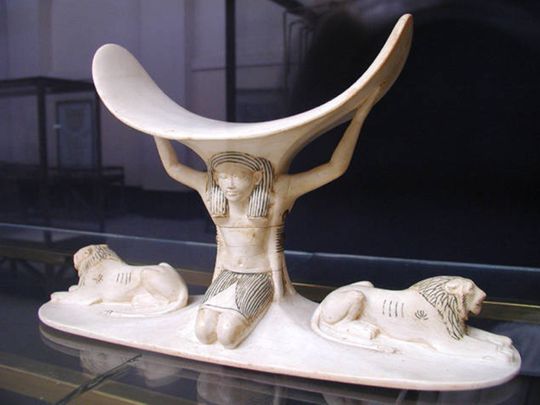
What if commonplace items around your home today, completely disappear tomorrow?
Click start to play today’s Spell It, where we discover objects from ancient Egypt that are now lost to ‘time’.
For nearly 3,000 years, ancient Egypt flourished as the most prominent civilisation in the Mediterranean. From the objects and documents they left behind, archaeologists and historians have been able to deduce how ancient Egyptians went about their everyday lives.
Here are a few objects from the era that were commonplace, but now no longer exist in the sphere of daily living:
1. Chalices

Ornate forms of art, chalices were ceramic drinking vessels that Egyptians used for their beverages. Not all chalices were turned into works of art, but those that were, often featured scenes of people, flora and animals. The Lotiform Chalice, for instance, which is on exhibit in the Metropolitan Museum of Art in New York, US, used the motif of a blue lotus – a flower that opens its petals to the sun every morning – which was considered a symbol of creation and rebirth.
2. Headrest
No comfortable pillows for ancient Egyptians – they used stone or wooden headrests. A curved piece, attached to a stem and a platform, allowed people to elevate their head, keeping them away from bugs, and cooling down the body.
3. Sandals

Unlike today’s cloud slides, Egyptians wore footwear crafted from the hides of cattle, goats and gazelle, or woven from plant material such as papyrus or grass. Similar to today’s flip-flops, this footwear was worn across all classes of society. But members of the royal elite had more elaborate versions, such as the gold sandals belonging to a queen of the pharaoh Thutmose III.
4. Ancestral busts
Today, we have picture frames that depict our family and friends. In the past, Egyptian homes had small limestone figurines of deceased loved ones, which would have been placed on a shelf set into the wall of the home. It helped them remember close relatives who had passed away.
5. Scratch pads

Just like how we doodle on scrap paper today, ancient Egyptians used limestone flakes as scratch pads – they were more abundantly available than pieces of papyrus. The National Museums Scotland houses one such limestone flake, which depicts a man chasing a monkey up a palm tree. The figure in the scratch pad stands victorious, similar to how a king may be shown on a temple wall, after defeating an enemy, which cause historians to think the doodler may have been amusing himself with his drawing.
What do you think of these everyday ancient items from Egypt? Play today’s Spell It and tell us at games@gulfnews.com.









